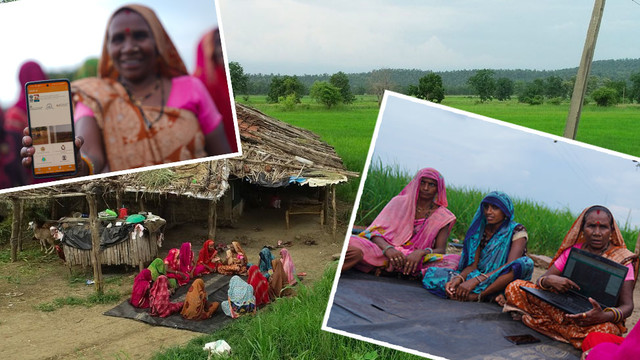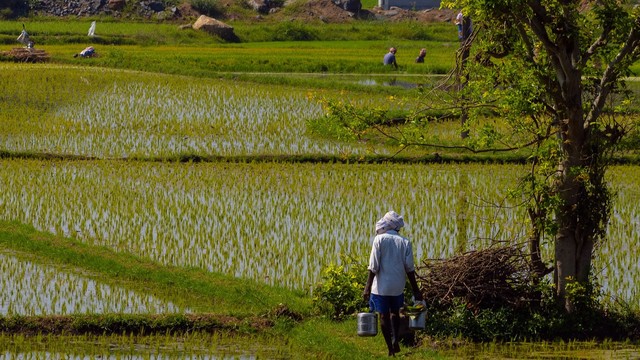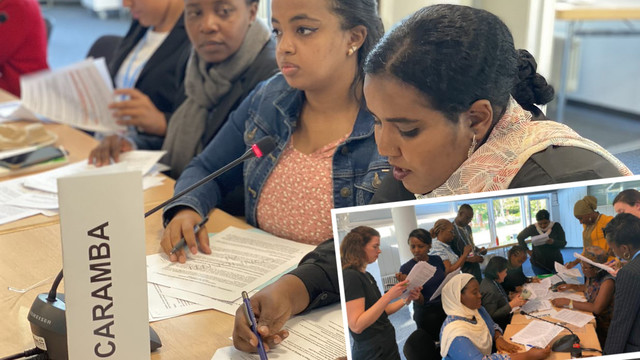Locally-led nature-based solutions can deliver global leaders’ pledge
One year on from the launch of the Leaders’ Pledge for Nature – when political leaders committed to reverse biodiversity loss by 2030 – Xiaoting Hou Jones, drawing on examples from the Least Developed Countries, sets out why locally-led nature-based solutions are indispensable for turning the pledge into action and delivering a green COVID-19 recovery.


In the Isiolo region, Kenya, a new irrigation scheme helps communities diversify sources of income to attain self-reliance to droughts (Photo: EU/ECHO/Martin Karimi via Flickr, CC BY-ND 2.0)
The COVID-19 pandemic has both highlighted and exacerbated society’s most urgent challenges, including the climate crisis, nature loss, poverty and inequality.
And recognising that all these challenges are interconnected, and that healthy people, a healthy planet and a healthy economy all go hand-in-hand, the Leaders’ Pledge for Nature makes the case for a green and just COVID-19 recovery that puts climate, nature and people at its heart.
Learning from the LDCs
Strong evidence collated by IIED and partners shows that nature-based solutions (NbS), when done well, can be an important and cost-effective tool for supporting the pledge of global leaders to achieve an inclusive green recovery while addressing the world’s multiple and interlinking challenges.
Seeing this potential, governments, businesses and civil society groups are increasingly embracing NbS (although there is always scope for wider political and societal support).
And among the strongest proponents are the LDCs that have been using nature to adapt to adverse climate effects and promote sustainable development long before the added challenge of COVID-19 emerged. In their 2050 vision, the LDCs explicitly commit to using NbS to deliver a climate-resilient future.
We recently reviewed 25 case studies of NbS implemented in 17 LDCs across diverse landscapes— from dryland restoration in Mali and improving mountain ecosystem management in Uganda to market-based approaches to sustainably manage forest and farm landscapes in Zambia.
While dealing with the health and economic ramifications of the pandemic, communities in these landscapes continue to battle other crises affecting their daily lives such as prolonged drought, soil degradation and the depletion of forest resources that provide essential food, medicine, fuel and income.
Any COVID-19 recovery plan must help them tackle these crises together, and so it follows that NbS – combining conservation, restoration and sustainable use of nature – must be central to those plans.
Diversifying for a more resilient future
Experiences from the 25 case studies show that a healthy and biodiverse ecosystem can also help prevent local communities relying on a single income source, reducing livelihood risks and improving resilience in times of crisis.
For example, diversified agroforestry production systems and restored forests also help secure local communities’ access to water, food, medicines and fuel.
These diversified landscapes and seascapes also allow communities to generate products for local and international markets. So even when transport links and markets are disrupted in times of climate disasters and crises such as COVID-19, local communities can be self-sufficient and have options to prevent their incomes from being heavily impacted.
Supporting and organising local champions
All 25 case studies show that strong local support for NbS is key to success.
For example, in Ethiopia, World Vision worked with local government agencies to support communities to develop their own natural resource management plans; in Mali, forest dialogue groups involving all local stakeholders provided open forums for discussions, to address conflicts and to adopt joint plans; in Sierra Leone, local communities and chiefdoms applied free, prior and informed consent principles to ensure meaningful participation and strong local support for NbS.
These participatory approaches and stronger community-based natural resource governance structures empower local communities to lead and implement NbS – and also ensure they benefit directly. These approaches also enable community members to become active advocates, teachers and guardians of natural resources to spread the word about NbS and help secure long-term support.
In addition, local community-based organisations and governance structures, such as forest and farm producer organisations or community-based conservation groups, not only mobilise and organise community members to implement NbS at scale but can also provide essential services and provide support to their members in the event of crises such as COVID-19.
This might involve providing loans and pandemic relief to vulnerable members, or access to alternative markets and income options when trade and transport are disrupted.
Money where it matters
Despite growing political support for NbS, as shown by the LDCs, NbS only receive a small share of global climate finance and only 10% of the global bailout for COVID-19 is earmarked for nature and climate.
Although NbS have proven time again their potential to deliver benefits for people, nature and climate, unless there is adequate long-term financing and dedicated support for local NbS champions, there is real danger that the ambitions of the leaders’ pledge will stay on paper.
The ongoing UN General Assembly and upcoming UN climate summit (COP26) in Glasgow offer leaders another opportunity to match political pledges with action and resources, and to support locally led NbS that deliver genuine benefits for climate, nature and people.




